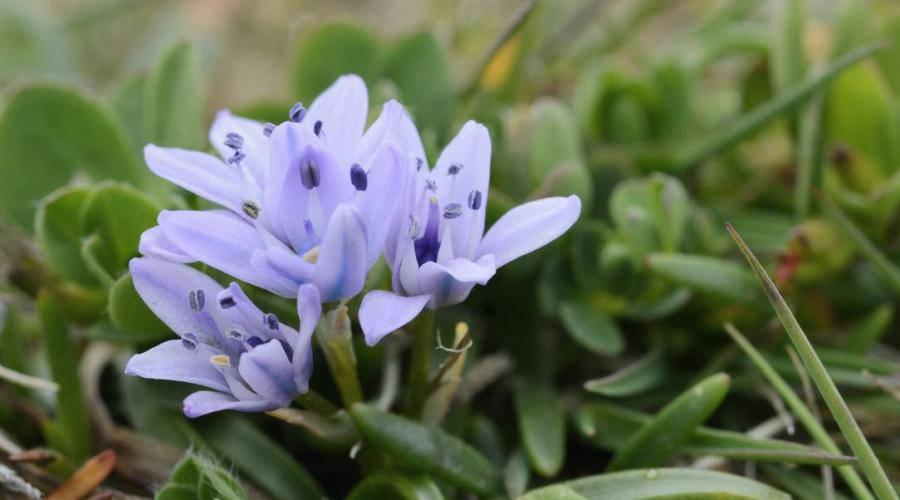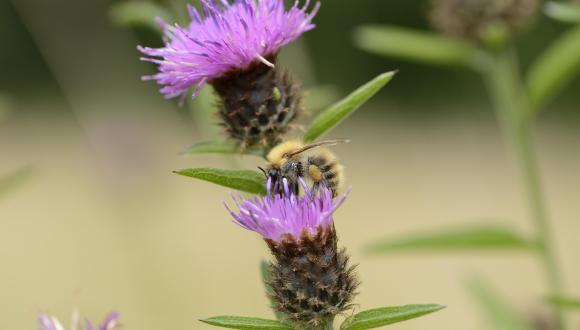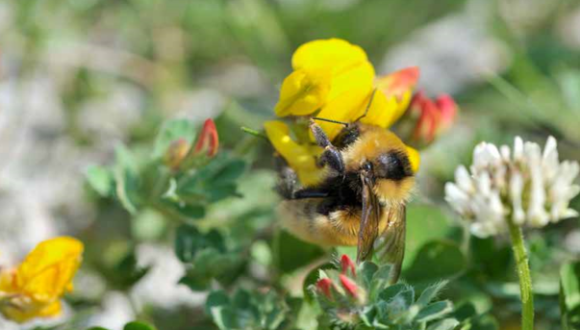
We have a wide range of resources to help you learn more about why we have a Pollinator Strategy, what we intend to achieve and how you can help us to help pollinators. Our aim is to make Scotland a pollinator-friendly success story.
Pollinator videos
We have a variety of short films looking at various pollinator projects and species. You can find these in our Biodiversity playlist on our YouTube channel.
A short animation about bees and pollination.
Pollinator species
Pollinating insects are fascinating creatures. There are many organisations devoted to celebrating and conserving individual species, and who can help you to identify them.
- Our own Wild bees of Scotland: Identification guide provides an identification key to 14 of the most common and fairly distinctive species of solitary bees known in Scotland. The Wildlife Trusts have also produced an excellent Guide to Solitary Bees.
- Try the Bees, Wasps and Ants Recording Society (BWARS) for information sheets on bee species and gardening for bees.
- For butterflies you may enjoy our content on butterflies and moths, or the Butterfly Conservation Scotland identification guides and information on species and habitats.
- UKmoths provides a picture guide to the moths of GB and Ireland which is a really handy tool.
- Our own Wasps and hoverflies leaflet gives a short introduction to these fascinating insects and All about Hoverflies expands on the biology and ecology of these pollinators.
Making space for pollinators
There are a range of guides to help with managing your outdoor space to be pollinator-friendly.
- Our Wind Farms and Pollinators guide offers practical advice on steps that can be taken on and around wind farms to help out pollinators.
- Our Pollinators in Planning and Construction guide on how to embed pollinator-friendly practice in the planning and construction industry is a really helpful steer for all those involved in developments.
- Planting for Pollinators is one of the best things you can do to help our pollinators. Our information can help you plan your garden to help our pollinating insects.
- We have useful tips on Helping Pollinators and making your outdoor space more pollinator-friendly.
- The All Ireland Pollinator Plan has a lot of resources in the form of 'how to' guides, signage templates and guidelines for different user groups.
- The Centre for Ecology & Hydrology (CEH) has a practical guide on Habitat Creation and Management for Pollinators.
- The Bumblebee Conservation Trust have great Pollinator Advisory Sheets on agriculture, gardens, industrial sites and green space, transport corridors, urban environment and woodlands.
- If you are managing a patch of land for pollinators by allowing the grass to grow, you might want to let people know why you are doing it. Our downloadable sign is free and will explain that you are managing an area for wildlife rather than letting it become ‘scruffy’.
- Wildflower meadow creation of perennial and biennial Scottish wildflower seeds. Advice for creating and sowing a wildflower patch.
- Our transport corridors offer opportunities for pollinators. Find out how Scotland's rail, road and canal networks help pollinators.
- Faith Communities and Pollinators, Scotland's Faith communities often look after areas of land which need management. If those areas are managed for pollinators, they can benefit nature and people.
- Our Businesses and pollinators advice suggests practical steps that can be taken to help pollinators.
- Our Pollinators and Hospital Grounds advice suggests practical steps that can be taken to help pollinators.
Pollinators in farming
There are various leaflets and guides covering good practice to help pollinating insects on farmland.
Pollination for young readers
We have resources which help explain the story of pollination and pollinators. These are suitable for printing as classroom posters and activity sheets.
Partnership working
Delivering Scotland’s Pollinator Strategy is a partnership between many bodies. To find out more about the work of our many partners please visit the web pages of:







